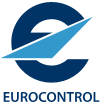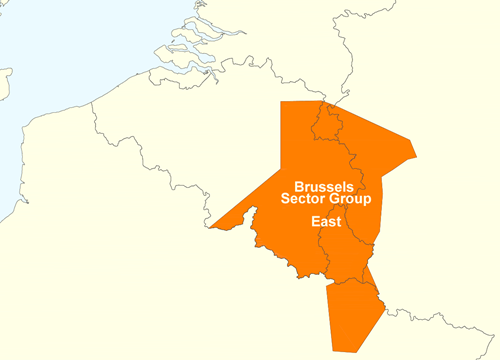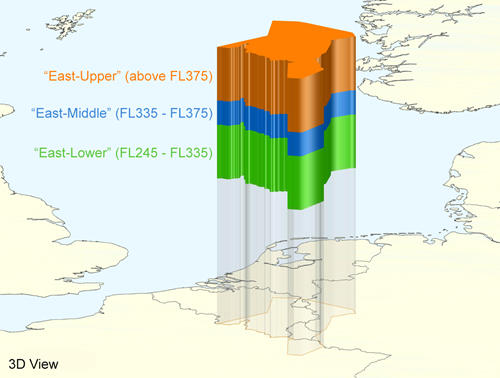Coping with soaring air traffic demand - New sectors to improve traffic handling in airspace controlled by Maastricht Upper Area Control Centre

A new three-layer sector configuration has been implemented in the upper airspace covering the south of Belgium, Luxembourg, the south of the Netherlands and adjacent airspace in Germany and France to cope with soaring air traffic demand. This airspace is managed in a cross-border mode by EUROCONTROL’s Maastricht Upper Area Control Centre (MUAC).

In the last three years, air traffic in the area under MUAC’s responsibility (upper airspace of Belgium, the Netherlands, Luxembourg and north-west Germany) increased by 8.6% or 135,000 additional flights - far beyond predictions. Located at the crossroads of European airspace, this particular area in southern Belgium, which is part of the so-called Brussels sector group, has experienced ever increasing demand from aircraft operators. Despite the fact that the Brussels sector group only covers 17% of MUAC’s total airspace, in 2016, it processed on average 20% more traffic than the other two MUAC sector groups (Germany and the Netherlands). With this growing trend, traffic demand regularly exceeds the capacity of the airspace. Several capacity-enhancing programmes are therefore in progress; this new sectorisation in Belgian airspace is one of them.
Following the new configuration, the airspace can now be split into three horizontal layers: from 24,500 to 33,500 feet; from 33,500 to 37,500 feet and from 37,500 to 66,000 feet. . This creates additional possibilities for a more optimum distribution of workload among air traffic controllers during traffic peaks. Work is continuing to fine-tune and optimise the use of the new configurations on the basis of the experience which is being acquired.

The ultimate goal is to prepare for the future and ensure a safe, cost-efficient and sustainable service to aircraft operators, taking into account growing traffic numbers and modern aircraft performance such as higher cruising levels.
With overall European air traffic to grow by 14% between 2016 and 2023, steady growth in traffic demand is expected to continue in the coming years.





.png)

.jpg)
Comments
There are no comments yet for this item
Join the discussion